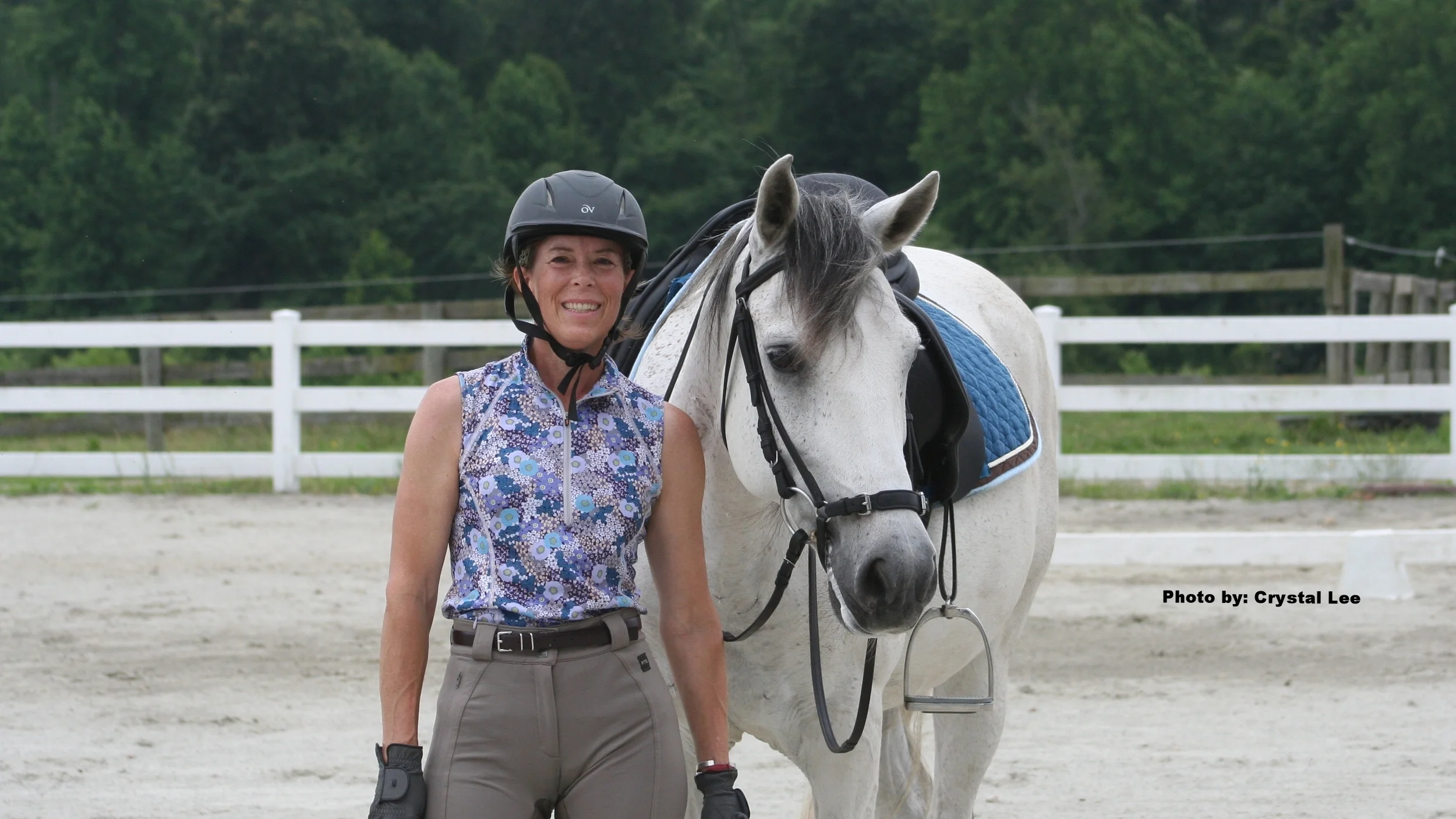Changes: Flying and Growth
/Five flying changes every 4 strides. I rode them today successfully for the very first time. I celebrated quietly inside myself without any grand announcements after my ride. Because I now know that tomorrow is just another day to continue working on riding in partnership with my horse; flying changes are in my repertoire of “stuff to work on” vs. something that I have mastered.
It seems like such a long time ago when I exuberantly celebrated riding three flying changes across the diagonal every 4 and every 3 strides in a January lesson last year. I did not know that was only the beginning of a very difficult movement for me to master. In a state of euphoria, I thought that this was it, I could do it, and I would be able to repeat it on my own and in future lessons. Two subsequent blog posts over the summer, July and August, provide a glimpse into the blocks that I had both physically and mentally. I stopped writing about flying changes; not because I had finally figured them out, but because I was too upset with my apparent lack of progress.
I think that I have tried just about every strategy in my instructor’s toolbox. I even contemplated giving up. Thankfully, my instructor did not give up on me, but I was ready to give up on myself, prepared to never ride above 4th level. Although the aids for riding a flying change are always the same, the methods and strategies for teaching and learning them ends up being a personal journey between instructor, student, and horse.
I have been through so many learning stages, since I started this journey. There was the slow mental and physical disassembling of the aids when I prepped several strides ahead of a flying change and executed the change in an exaggerated manner. There was the time period when I just listened to my instructor and flung my body and legs into the new lead on her verbal cue. There was the time I counted out loud and tried asking for the new lead on different verbal cues for myself like change, switch, and step. I tried one strategy after another, throwing each one away when it started to fail. What I did not realize that each strategy was furthering my understanding and my physical ability. Each stage was a part of my slow and steady progress to be able to execute a series of flying changes.
Correct flying changes aren’t actually easy; doing them in a series is even more difficult. I had to figure out how and when to count. I had to learn the timing of my aids and the results of applying them too slow, too early or too late. And I had to work through the incorrect use of my aids or the actual lack of an aid - the possibilities are infinite – too much rein, outside leg not back, failure to get on my new seat bone, hands too high, or my favorite, to simply stop riding and hope that my horse carries me through the change or series. There is also the correct preparation of the horse to consider – do I have enough impulsion, is my horse balanced, is he behind my leg or rushing through my aids, am I riding him straight? I had to learn what it feels like when your horse is “late behind” or “takes an extra step” or “doesn’t change behind” or “changes a stride after your aids”. Then there are all of the directives: step into the new inside stirrup, swing your outside leg back from the hip, look up, think about riding on your pockets, ride the new lead, and more. Off my horse, when I walked my dogs, I skipped flying changes, I sat on the exercise ball and practiced switching seat bones, and I visualized myself riding changes while driving back and forth to the barn.
The feeling of an effortless flying change is one of those almost indescribable moments in time. I do not experience it every single time, but I now have enough of those moments to feel like I am riding flying changes in partnership with my horse.
Today, I gave my horse a liniment bath and walked him back out to his pasture, quietly savoring one more step on my journey. I now know that today is still a beginning. I have more flying changes to ride tomorrow.
